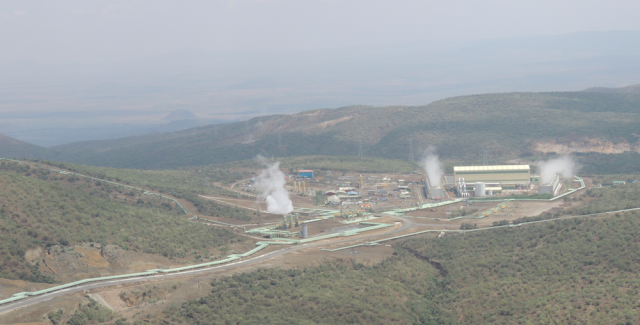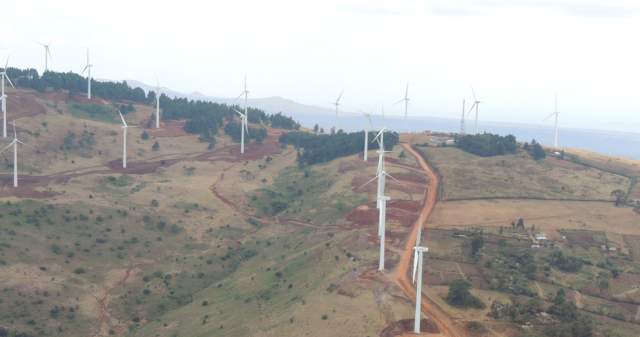Building Sustainability into the East African Power Pool Plan
New Study Recommends Less Hydro, More Climate-Resilient Renewables
UC Berkeley’s Renewable and Appropriate Energy Laboratory and International Rivers have co-published a review of the energy planning and resource assessment efforts being done by the East African Power Pool (EAPP), and recommendations for its improvement.
The EAPP has the potential to play a major positive role in driving energy investments in the region for years to come, but its heavy focus on large dams puts the region at high risk from a changing climate. The report recommends the EAPP shift its priorities to include a much greater proportion of renewable energy sources like solar, geothermal and wind, and to take greater account of climate risks to large hydropower projects.
As currently configured, the EAPP will rely heavily on some of Africa’s largest hydropower dams, such as Ethiopia’s controversial megaprojects, the Gibe III Dam now nearing completion on the Omo River and the Grand Renaissance Dam on the Blue Nile. Currently, about a quarter of electricity generated in EAPP countries comes from hydropower, but future investments will create a greater dependence on hydropower. The EAPP has identified hydropower projects that will almost double the EAPP’s current installed capacity; an estimated 60% will come from Ethiopian hydropower generation alone.
“Too little information exists about the risks to hydropower dams in East Africa to justify such a heavy growth in hydropower,” the authors state. The EAPP Master Plan does not include an analysis of the effects of climate change on the regional power strategy or provide any insight into possible problems associated with climate change conditions. The Master Plan mentions Ethiopia’s vulnerability to drought but makes no attempt to address the impacts of possible droughts on the region’s economy.
Lead author Dr. Daniel Kammen, Professor of Energy at the University of California, Berkeley says, “We find that the clean, non-hydro energy potential of the East African region is vast, and developing it can lead to strong economic, social and environmentally beneficial development. Such a plan can meet even the rapidly growing energy needs of the region, make more significant progress in increasing energy access, and do so in a way that achieves environmental sustainability. The report develops a plan that contributes significantly more diverse and vibrant private sector.” The report notes that the region’s solar resource alone is sufficient to provide the needed energy resources for each EAPP nation, and that available non-hydro renewable electricity sources account for roughly 80% of the identified hydropower projects in the EAPP Master Plan.
The Need for a Plan to Alleviate Energy Poverty
The study also looked at the impact of the EAPP on increasing energy access among the poor. In spite of alarmingly high numbers of people in the region without access to modern energy, the EAPP’s Master Plan does not specifically provide detailed plans for alleviating energy poverty in rural communities. Although 69 million Ethiopians are now without electricity, the report finds, Ethiopia is increasing its electricity exports from hundreds of megawatts as of 2014, to over 2,000 MW by 2018. In spite of these alarming figures, the EAPP’s Master Plan does not specifically provide detailed plans for alleviating energy poverty in rural communities.
“We recommend the completion of additional studies by the EAPP to capture all small-scale, decentralized potential electricity sources in the entire East African region in order to avoid as many large-scale hydro projects as possible. The reason for this is simple: mini-grids and community energy programs can greatly build local energy access and economic opportunity, and can be the ‘seeds’ of growing regional grids. This decentralized energy policy builds economic growth across nations, which often overly focus their economic empowerment programs on the capital and large second-tier cities, not on rural communities that are so vital to the quality of life across East Africa.”
The study also notes the likelihood of cost containment and cost overruns in a hydropower-heavy EAPP. “Hydropower is prone to the greatest time overruns and the largest amount of a cost overrun (almost $1 billion per project according to new work from the Global Change Unit at Oxford University).” Wind and solar projects are much less prone to cost overruns. The study recommends diversification of the energy matrix to help reduce cost-overrun risks.
The EAPP is being supported by the US Government, the World Bank, African Development Bank, the region’s governments.
Download the study
https://rael.berkeley.edu/publications/a‑clean-energy-vision-of-the-east-african-power-pool
_______________________________________________________________________
Kenya as the Emerging Clean Energy Leader
Excerpt from the report.
East Africa has not only some of the best solar, wind, biomass, and geothermal resources in the world, but also largely manageable urban areas and, with a few exceptions, low population density. This abundance of clean energy resources and a growing demand for both on-grid, mini-grid, and stand-alone energy services calls for a new integrated planning perspective.
Kenya provides an ideal test-bed. A nation with a current annual GSP growth rate of over 5%, Kenya has visions of 5,000 MW of new on-grid capacity in only 40 months, and yet a population that is only 29% grid-connected today.
In fact, a closer look reveals the tremendous advantages of a clean energy growth plan for the nation. Kenya has examined the resource base and is now building a power mix that, if accelerated, will position the nation to have minimal, if any, need for imported fuels, and will enable the nation to claim a major leadership place in the coming clean energy economy.
Not only is the power demand growing, but climate change and increasing demands for water mean that Kenya must meet this demand while reducing dramatically its reliance on hydropower. The fact that Kenya has economically assessed geothermal resources alone that could meet a baseload demand of 10,000 MW, or more than five times national on-grid power demand today, means that even if a simple 1:1 replacement of hydropower with geothermal was needed, this would be possible.
In fact, Kenya is on pace to expand its geothermal production from just over 500 MW to over 3,000 MW in just a few years. Geothermal is today the least-cost form of on-grid generation in Kenya, with costs as low at 8.5 cents/kWh, one third of the fossil fuel costs.
The geothermal story in Kenya is not unique. Wind could rival geothermal as a growth industry. New discoveries (such as the incredibly rich wind resource at Lake Turkana).
Challenges do remain, with the off-grid population and expansion of energy programs for the poor key issues (but where efforts from the growing private sector pay-as-you-go programs of M‑KOPA, SunnyMoney and others are making progress).
At the industrial level, however, the expansion of clean, on-grid energy can also bring about new industrial potential. Even while taking the prudent step to dramatically reduce the planned use of hydropower, Kenya is planning a new industrial corridor built around clean geothermal, wind, and solar energy.
What is taking place in Kenya could also happen elsewhere in the region.
For additional coverage, see:


You must be logged in to post a comment.